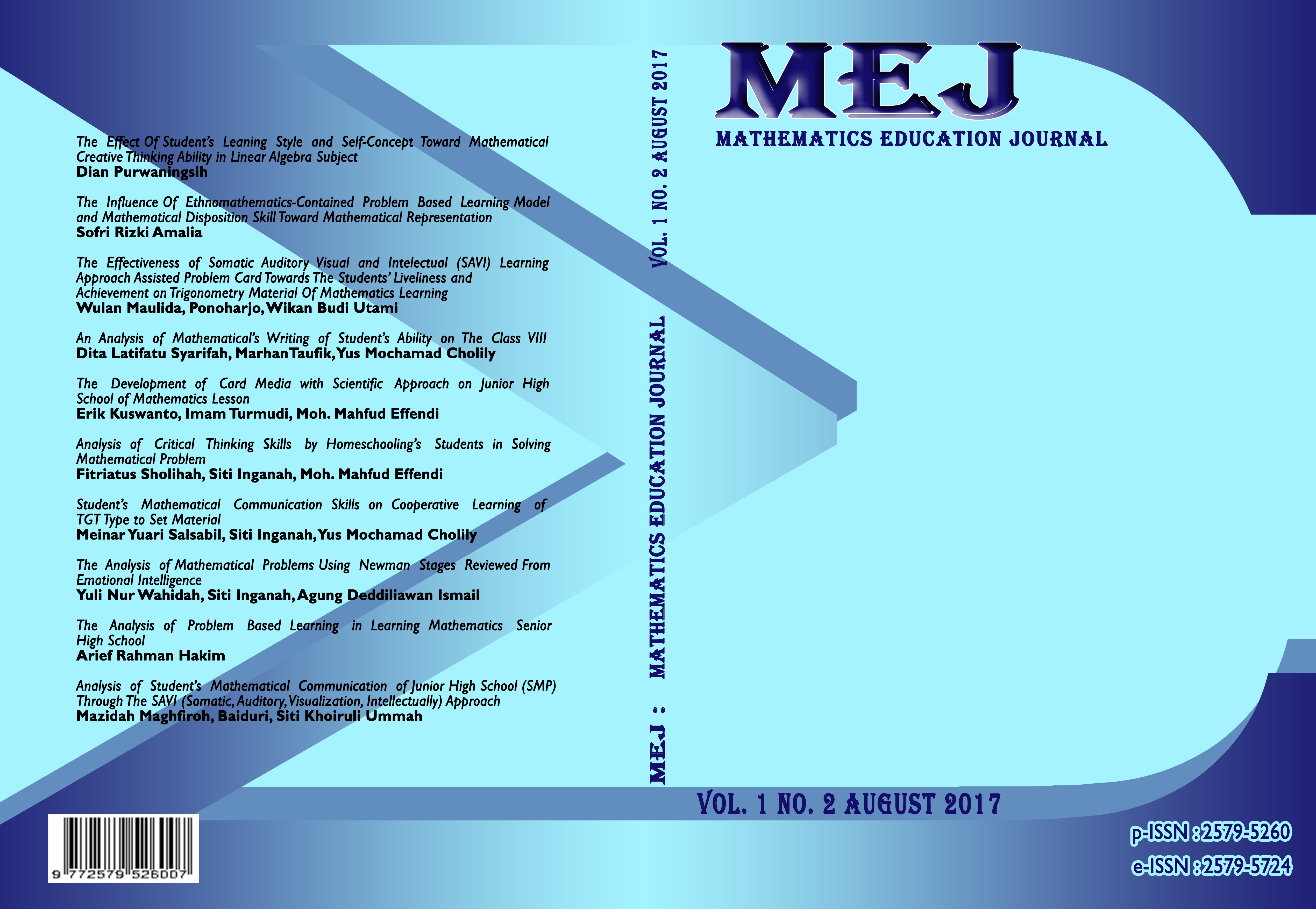ANALYSIS OF STUDENTS MATHEMATICAL COMMUNICATION OF JUNIOR HIGH SCHOOL (SMP) THROUGH THE SAVI (SOMATIC, AUDITORY, VISUALIZATION, INTELLECTUALLY) APPROACH
DOI:
https://doi.org/10.22219/mej.v1i2.4632Keywords:
mathematical communication, the approach of SAVIAbstract
The purpose of this research is to analyze the students’ mathematicalcommunication in junior high school verbally as well as written by means the
approach of SAVI. This research uses qualitative approach with descriptive
research type. The subjects of this study totally 31 students of junior high
school on a class VIII, while the object is the students’ mathematical
communication, verbal as well as written using the approach of SAVI. The
instrument used in this study are observation and test sheets. The data will be
analyzed using three plots, namely: data reduction, data presentations and
summarizing. The result of this study shows that students’ verbal
communication in mathematics by means the approach of SAVI is in good
category. Students can finely declare the examples, explain mathematics
representations, give questions and answers, declare the situation of a
problem in mathematical model, discuss a problem, conclude the result of
the discussion and make summary related to the subject. The written
mathematical communication of students is also in good category. Students
can do well in writing mathematical ideas and representations, finding
important points, rewriting the test in mathematical model, finishing the
problem and wraiting the summary related to the subject.
Downloads
Downloads
Published
Issue
Section
License
Authors who publish with MEJ (Mathematics Education Journal) agree to the following terms:
For all articles published in MEJ, copyright is retained by the authors. Authors give permission to the publisher to announce the work with conditions. When the manuscript is accepted for publication, the authors agree to automatic transfer of the publishing right to the publisher.
Authors retain copyright and grant the journal right of first publication with the work simultaneously licensed under a Creative Commons Attribution-ShareAlike 4.0 International License that allows others to share the work with an acknowledgment of the work's authorship and initial publication in this journal.
Authors are able to enter into separate, additional contractual arrangements for the non-exclusive distribution of the journal's published version of the work (e.g., post it to an institutional repository or publish it in a book), with an acknowledgment of its initial publication in this journal.
Authors are permitted and encouraged to post their work online (e.g., in institutional repositories or on their website) prior to and during the submission process, as it can lead to productive exchanges, as well as earlier and greater citation of published work (See The Effect of Open Access).

This work is licensed under a Creative Commons Attribution-ShareAlike 4.0 International License.










